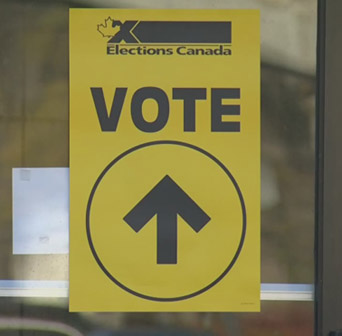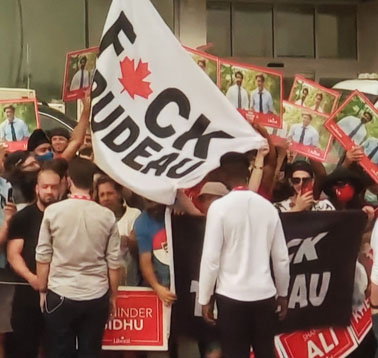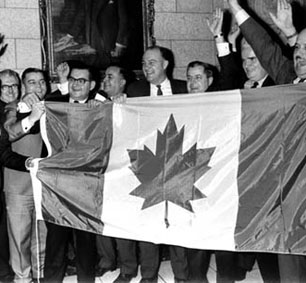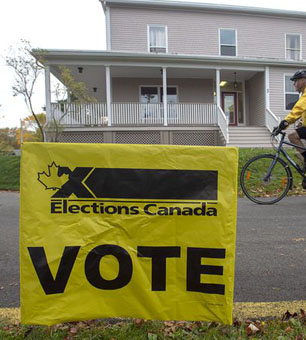2021 Canadian election last-half log, VI : ???? (Another Lib minority gov that lasts how long ?? Or a bigger surprise waiting till last minute to make up its mind ??)
Sep 19th, 2021 | By Counterweights Editors | Category: In Brief
COUNTERWEIGHTS EDITORS, EAST TORONTO OFFICE. SUNDAY 19 SEPTEMBER 2021. For this our last Canadian federal election 2021 log entry before election day tomorrow, we’ve confined the polling statistics to an appendix at the end.
Our conclusions more immediately below are based on careful study of such statistics, and our own ongoing internal debate as it most openly takes place before the giant TV screen in our office boardroom.
Winners and Losers
As far as tomorrow’s ultimate ballot question goes, we agree with the widely held view that the polling and other more or less objective evidence suggests another Liberal minority government (albeit with somewhat greater dependence on the New Democrats for key legislation) as the most likely 2021 election outcome.
But we also think either a Conservative minority government or even (PM Trudeau’s original holy grail) a Liberal majority government are, in the technical jargon of eminent CTV pollster Nik Nanos, “not out of the realm of possibility.” And as a team of confirmed political junkies we will be watching our giant TV screen with great fascination tomorrow night – another great show for We the North, after the more continental Emmy Awards tonight.
Something sensible from CBC at the last minute : On what is basic income and which of Canada’s main parties support it?
Whatever else, we have been encouraged that at last, on the day before the election, the CBC News website has posted a helpful article on a major issue for the Canadian future – in a campaign that has focussed more on manipulative political rhetoric than any deep debate on real-world public policy.
See Jaela Bernstien’s “What is basic income and which of Canada’s main parties support it? … The Canada emergency response benefit renewed calls for establishing a national livable income program.”
Ms. Bernstein aptly notes that “What makes basic income different from other programs, such as income assistance or welfare, is that it comes with no strings attached. In the simplest terms, it’s a regular payment without conditions, sent from the government to families and individuals.”
She also explains the two main approaches to the debate in Canada so far. On the one hand : “Right now, struggling Canadians can access help support through a patchwork of federal, provincial and municipal programs … Health economist Evelyn Forget, a professor in the department of health sciences at the University of Manitoba in Winnipeg, said that basic income would replace many of those programs, and ideally cut out a lot of the confusing, bureaucratic red tape … Forget, the author of Basic Income for Canadians: from the COVID-19 emergency to financial security for all, is a firm believer in the benefits of basic income.”

On the other hand, “In 2018, the government of British Columbia asked a panel of experts to study the feasibility of a basic income for the province. The resulting report found that “the needs of people in this society are too diverse to be effectively answered simply with a cheque from the government.” … Panel chair David Green … said the better solution is to reform the programs that already exist … to tackle issues head-on, targeting poor working conditions and low wages, reforming the disability assistance program and boosting rent assistance.”
Jaela Bernstien’s article concludes with an assessment of the different current approaches to “guaranteed livable income program”, “guaranteed livable basic income”, and “a national basic income strategy” among the six main political parties competing in this election. Very broadly, the Greens, New Democrats, and Liberals have evinced various kinds of interest. The Conservatives, BQ and People’s Party have not.
Complaints about lack of political realism in so much mainstream media coverage of the 2021 Canadian election

In many ways this has seemed an election about complaints – in a country that arguably for even some majority of its inhabitants is one of the luckiest places on the planet. So we’re going to conclude with some key complaints of our own.
In the campaign now ending, eg, where were the mainstream media journalists telling us that the average minority government in Canada lasts about 18 months? And the Justin Trudeau Liberal minority government elected October 21, 2019 was in office for some 21 months when the 2021 election was called.
Where were the mainstream commentators pointing out that Canada’s current fixed-date election legislation was introduced by Stephen Harper’s Conservative minority government as recently as 2007. And Prime Minister Harper immediately went on to call two successive “snap elections” that violated the fixed-date law in 2008 and 2011.

All this of course was as the fixed-date legislation still allows, as it must to preserve the essential democratic logic of modern parliamentary government. The opposition parties, eg, can defeat a minority government in parliament and thus precipitate an election, whenever they like, even under fixed-date election laws. Why shouldn’t the government party have a similar power?
Wouldn’t it be unfair to the government (and even an agent of perpetual political instability, as in the short-lived Fourth French Republic after the Second World War?) if only the opposition can call a “snap election,” when the government does not have a majority of seats in the popularly elected legislature?
PM Harper similarly called two non-fixed-date “snap” elections in 2008 and 2011, in a straightforward quest to convert his minority government of the day into a majority government.
The snap election failed in this objective in 2008 (as PM Trudeau’s similar effort appears most likely to do in 2021). But it finally worked in 2011 – and the resulting majority government did last until the next prescribed fixed-date election in 2015.
Appendix : A last look at polling statistics

Nanos Daily Ballot Tracking SEP 19 : LIB 30.8%, CON 30.5%, NDP 21.0%, BQ 6.5%, PPC 5.6%, GRN 4.7% ; Nanos Daily Ballot Tracking SEP 18 : LIB 31.3%, CON 29.2%, NDP 20.9%, PPC 7.3%, BQ 6.4%, GRN 3.9%.
ABACUS DAILY TRACKING SEP 19 : CON 32%, LIB 31%, NDP 19%, BQ 7%, PPC 6%, GRN 4% ; ABACUS DAILY TRACKING SEP 18 : LIB 32%, CON 31%, NDP 21%, PPC 6%, BQ 6%, GRN 3%.
CBC Poll Tracker SEP 19 seats : LIB 154, CON 118, NDP 34, BQ 31, GRN 1 ; CBC Poll Tracker SEP 18 seats : LIB 150, CON 118, NDP 38, BQ 31, GRN 1.
338Canada SEP 19 seats : LIB 146, CON 127, BQ 32, NDP 31, GRN 2 ; 338Canada SEP 18 seats : LIB 147, CON 127, NDP 32, BQ 31, GRN 2.
Nanos and ABACUS tracking polls (above) show some final slight Conservative strengthening. Two other particular final polls show an opposite Liberal strengthening : EKOS (32.6% LIB, 27.3% CON, 18.0% NDP) ; and Mainstreet (33.4% LIB, 30.4% CON, 18.1% NDP).


